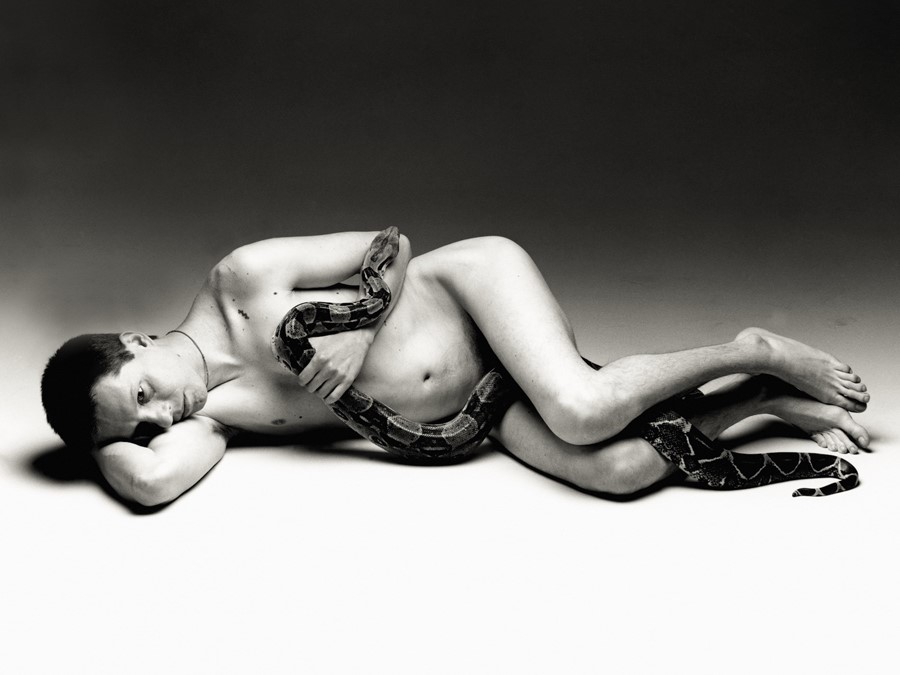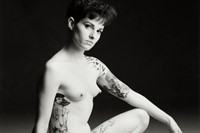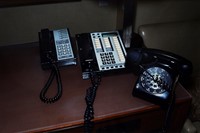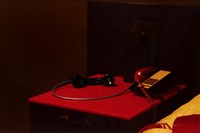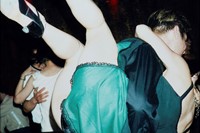Danielle Neu speaks to Miss Rosen about her psychological thriller-inspired exhibition, which looks at themes of sex and death within the setting of an old Hollywood home
In her early twenties, fashion photographer Danielle Neu worked Los Angeles’ famed boutique Trashy Lingerie, designing pasties, chokers, and various accessories for high-end sex workers. Neu developed a passion for making hats and began photographing her friends in them a night. “After that, I never really put the camera down,” she tells AnOther.
Inspired by director Brian De Palma, the mastermind behind iconic films including Body Double, Scarface and Carrie, Neu developed a passion for baroque tableaux of sex and death – themes she explored in the recent group exhibition Pull-Back Dolly!. Bringing together the work of V Vale, Flannery Silva, Megan Plunkett, Charles Gatewood, and Bobby Adams alongside her own, Neu arranged their works inside an old home on Wilton Place to craft the intensely intimate experience of psychological thrillers.
Pull-Back Dolly! takes its title from a type of shot directors of photography use in filmmaking. Beginning with a tight close up, the camera slowly glides backwards on a dolly to reveal the full scene, offering a provocative counterpoint to the way the camera is traditionally used to see. The shot celebrates our penchant for voyeurism, for transgressing all boundaries in search of the thrill that comes from looking at that which is not ours to see.
“The camera can feel like such an invasive instrument yet we are constantly engaging with the para-social and peeking into others’ lives,” says Neu. “What once felt private now feels very public. The division between those two spaces becomes marred because we are constantly consuming others’ lives. Often I think we define ourselves in relationship to others and photography is an undeniable instrument in that process.”
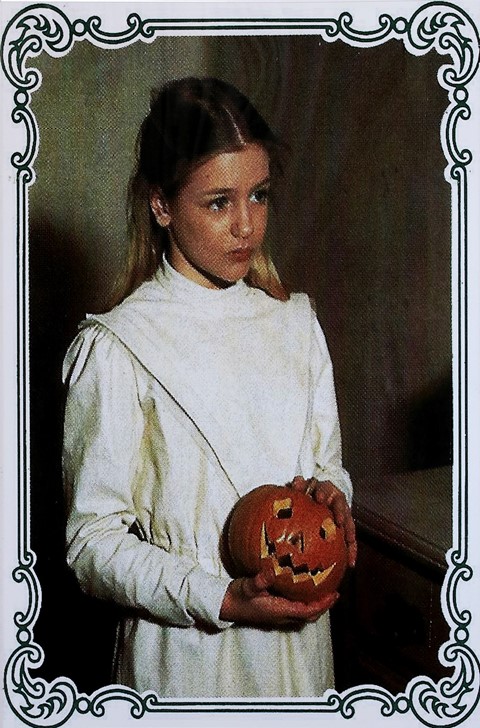
The artists in Pull-Back Dolly! share a complicated relationship to the camera, using it as a means to pull back the curtain on what usually goes unseen. “V Vale’s work in the exhibition depicts the vantage point of the pushy, invasive photographer,” Neu says. “I love how you can feel the frustration in the faces of his subjects, looking at him as if he just stole something.”
“Megan Plunkett’s photographs are interpretations of snapshots taken at the scene of the crime of John Belushi’s death,” she continues. “She uses a forensic approach in the way she pulls apart images and puts them back together in her own Frankensteinian way. Bobby Adams photographs people in a way that feels very slick and editorial, yet his subjects are in the nude and covered in tattoos. Something about his approach makes one feel as if they have special x-ray glasses on while looking at the images – it’s very uncanny.”
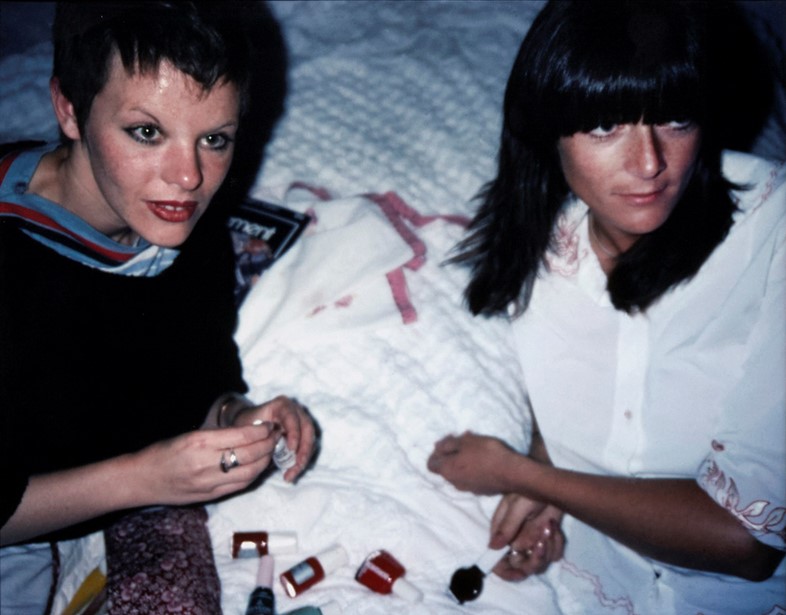
The uncanny lurks throughout the show, underscored by Neu’s decision to install it in an old Hollywood home, creating a powerful feeling of déjà vu that often comes from staying up too many late nights watching horror films. “I feel that using a haunted domestic space, rather than a blank white cube,” she says. “It heightens one’s awareness of looking, while also reiterating the notion of the private and the intimate. It also taps into the cinematic genre of the ‘haunted house’ and serves as a symbol of the unknown.”
Although Neu does not consider herself a curator, she created Pull-Back Dolly! from a profound feeling of necessity. “My day job as a fashion photographer pushes me fully into the realm of beauty and desire,” she says. “At night, I find myself turning these symbols on their head, highlighting their edges, and presenting an alternate reality that shows the joke in it all. I wanted to share what makes me tick with the rest of the world.”
